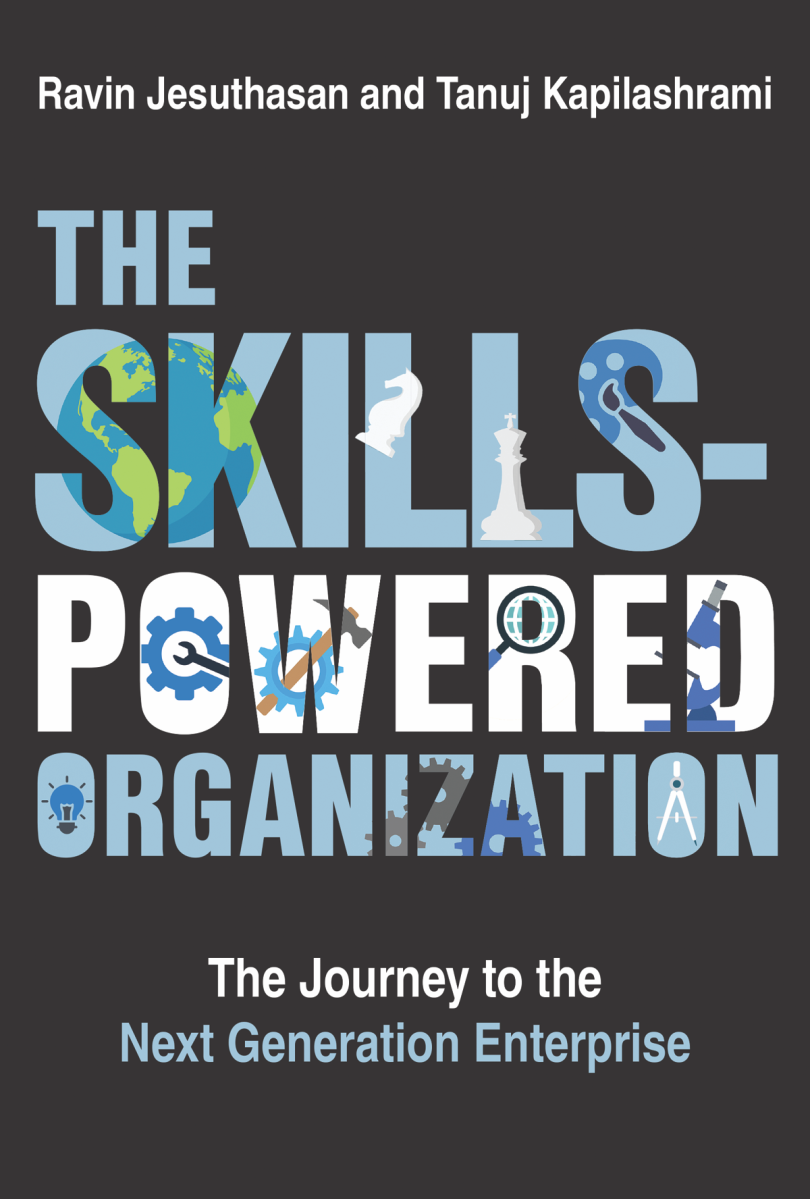The following table depicts the three primary shifts we see as we evolve from the traditional jobs-based organization to a skills-powered one:

In Work Without Jobs, Jesuthasan and Boudreau explored the organization’s evolution across these three dimensions through three models for organizing and connecting talent to work. Figure 2.1 depicts these three models and some of their core underpinning constructs.
What Is a Skills-Based Organization?
A skills-based organization is one where work and workforce planning are denominated by the skills required and supplied, as each individual is viewed as a unique bundle of skills that is continuously evolving (rather than a jobholder who is defined by their current job). The underlying technology is a series of skills-powered platforms that offer visibility into the internal and external supply of skills, enable continuous matching of skills to work and provide learning resources to talent.
The Fixed Model
Let’s start on the left with the fixed model. With the job as its core underpinning, this construct was developed for the increasingly complicated but relatively stable world of the late 19th century/early 20th century.

Enabling the skills-based enterprise. Source: Ravin Jesuthasan. Adapted from Ravin Jesuthasan and John Boudreau, “Work without Jobs,” Sloan Management Review, January 5, 2021.
The jobs are aggregated into job families, job families aggregated into functions and functions combined into that more traditional hierarchical structure we are all familiar with.
The primary organizational imperatives that underpin this construct are a focus on increasing scale (to offset the high fixed cost of building and owning all the capabilities needed to operate), driving efficiency (to lower said fixed cost) and placing a premium on expertise to increase the value of inputs.
In this model, with its primary talent imperative of control to maximize the predictability with which inputs are converted into outputs, the job is the logical building block given the full and permanent focus of the jobholder on the tasks comprising the job.
While the shift in the world of work is certainly toward the flexible and flow models, the fixed model continues to be relevant, particularly for work where there is a premium on compliance or control (think quality control or piloting an airplane).
The infrastructure underpinning this fixed model includes job architectures that allow talent to move from one job to another as demand for work evolves, planning denominated by jobholders moving within and across job families and technology infrastructure mostly comprising enterprise resource planning systems that support data management as talent is acquired, developed, deployed and transitioned.
The Flexible Model
Now let’s turn our attention to the flexible model.
This more recent phenomenon is built for an increasingly complex world characterized by growing uncertainty, volatility in demand and supply and a changing set of requirements of both the organization of talent and vice versa. The structure here is a hybrid of a traditional hierarchy, combined with the flexibility for talent to be deployed and redeployed at speed as demand changes.
The primary organizational imperatives underpinning this model are a growing premium on speed, agility and flexibility. Unlike the emphasis on expertise to increase the quality of inputs in the fixed model, there is a growing focus on execution as the aforementioned external factors reduce the timeframe within which value can be captured.
In this model, the talent imperative shifts from control to managing capacity across the organization. We begin to see the emergence of the hybrid state where jobs and skills are the currency for work.
Talent might still be in jobs, but they have the flexibility to either express their skills in different domains (e.g., a data scientist from IT who takes on a workforce analytics project in HR) or acquire new skills that align with their passions and interests (e.g., a finance professional who volunteers for a DEI project) through projects and assignments.
The infrastructure underpinning this flexible model includes a hybrid construct that combines job architectures and skills-powered constructs powered by robust skill taxonomies. Planning is a mix of position and skills-powered planning as jobs coexist with projects, assignments and gigs.
The technology infrastructure combines ERP systems with internal talent marketplaces that use AI to match the demand for work with the supply of skills and provides insights into the skill gaps needing to be closed.
The Flow Model
The flow model is the third model, driven by the need to navigate an external environment characterized by volatility, hypercompetition and high uncertainty. The primary organizational imperatives underpinning the flexible model of speed, agility and flexibility are dialed to 11 in this scenario.
Talent connects to work through projects, assignments and gigs, as AI continuously monitors the changing demand for work, infers the skills required and matches talent to work. The talent imperative in this scenario is one of capability deployment as skills become the pure currency for work.

The flow model enables the organization to more seamlessly access capabilities that are built (employees), shared (third-party talent) and rented (gig workers) based on the matching of their skills to work. The infrastructure includes a skill taxonomy continuously updated as demand for work evolves.
This approach is particularly effective as it directs resources where skill gaps are identified, based on mismatches between the evolving demands of work and the supply of skills across the workforce. In this model, talent is organized into squads that come together to take on various projects and tribes that are more enduring communities that learn, grow and develop together.
As AI continues to reinvent work — substituting some activities, augmenting others and transforming yet others — the required skills will change at increasing speed. Some skills will be rendered obsolete, others will change in their application as AI and automation increasingly augment them and new ones will be demanded.
Organizations (and talent) will only stay relevant if they can upskill and reskill at the pace of AI as the half-life of many skills shrinks dramatically and new ones emerge.
This extract is from The Skills-Powered Organization: The Journey to the Next-Generation Enterprise by Ravin Jesuthasan and Tanuj Kapilashrami, published on October 1, 2024 by the MIT Press. Reproduced with permission from the publisher.





